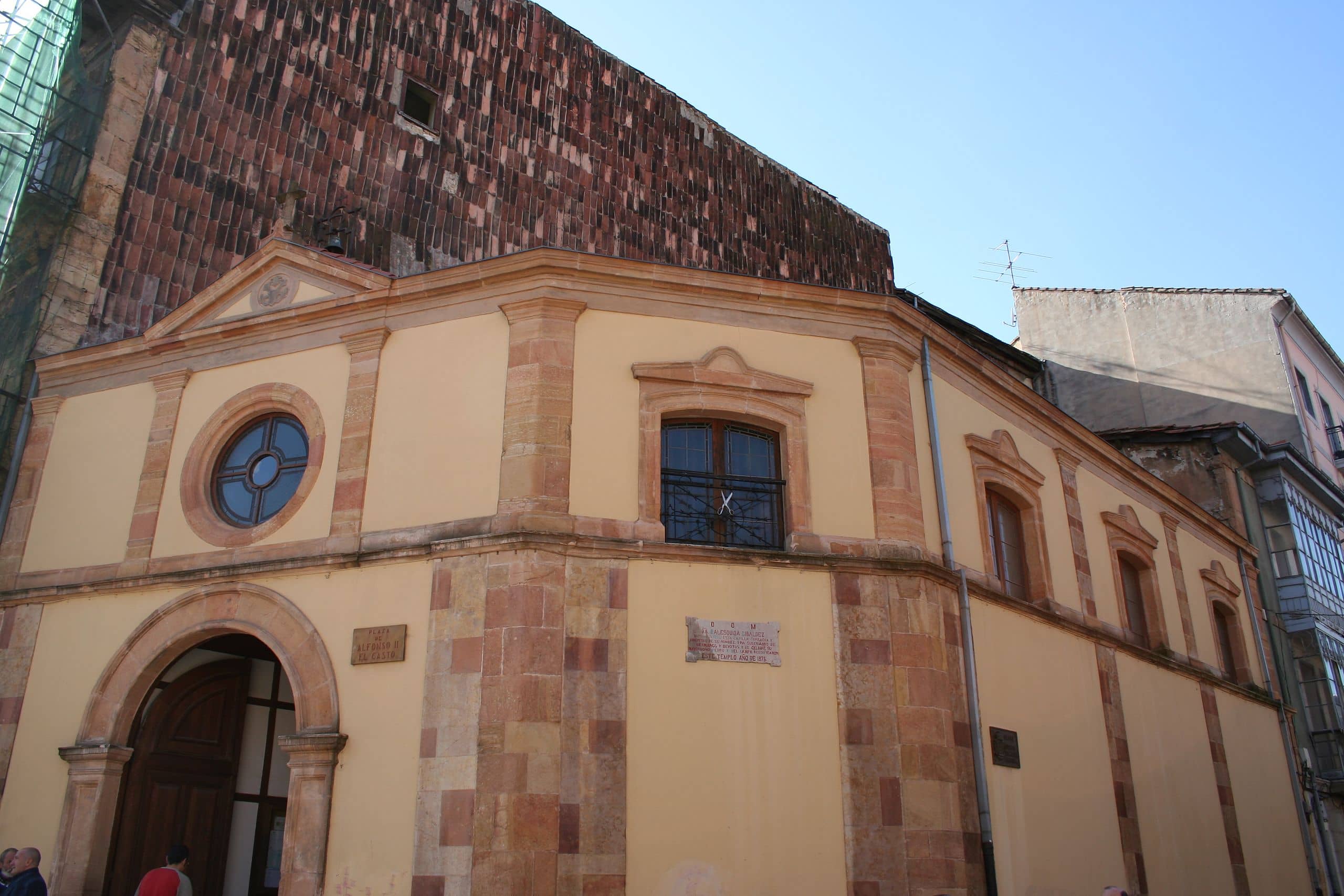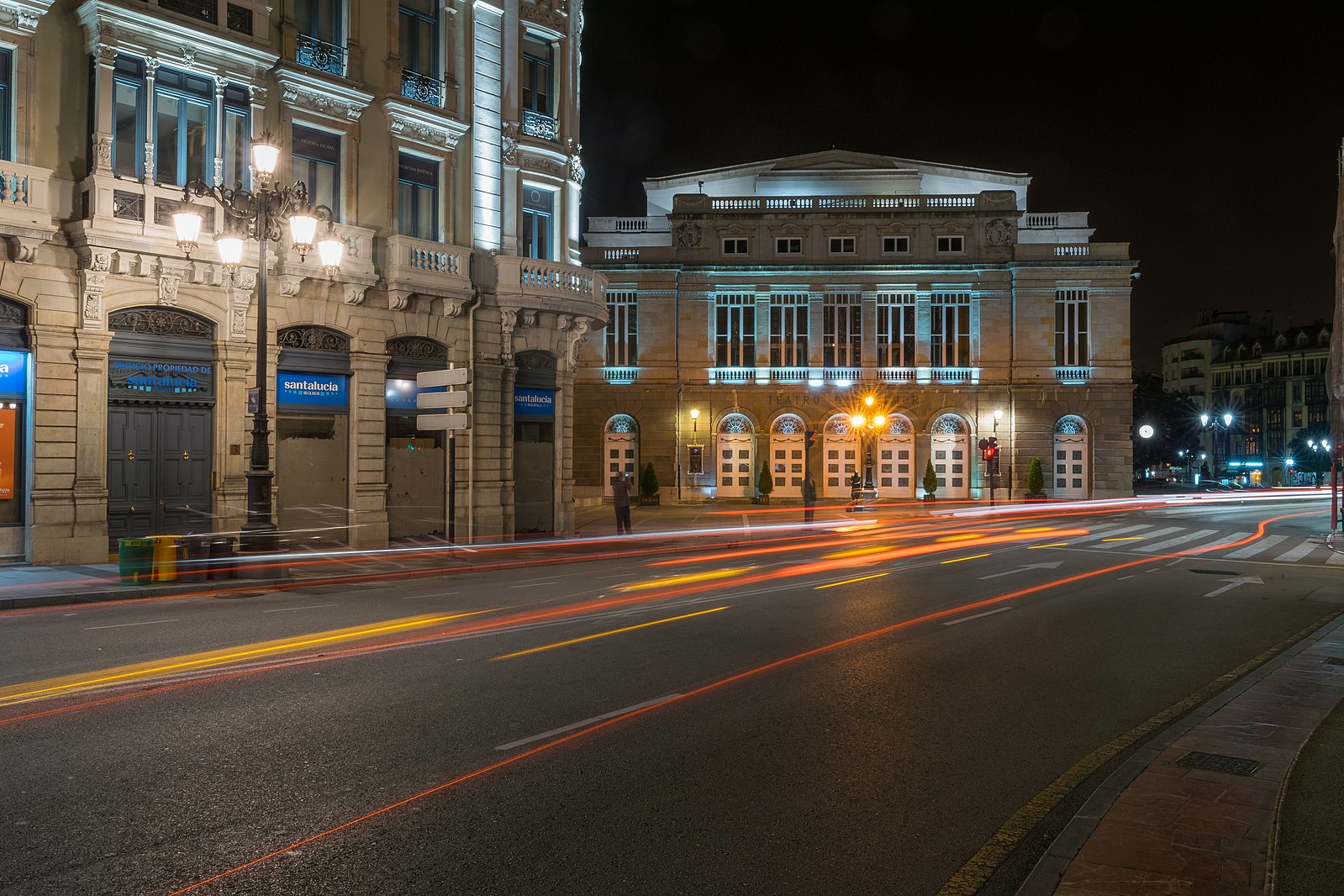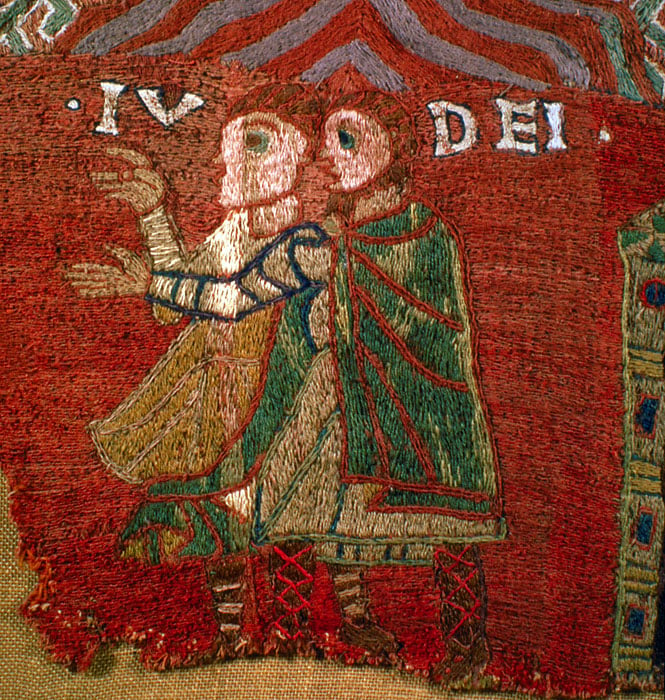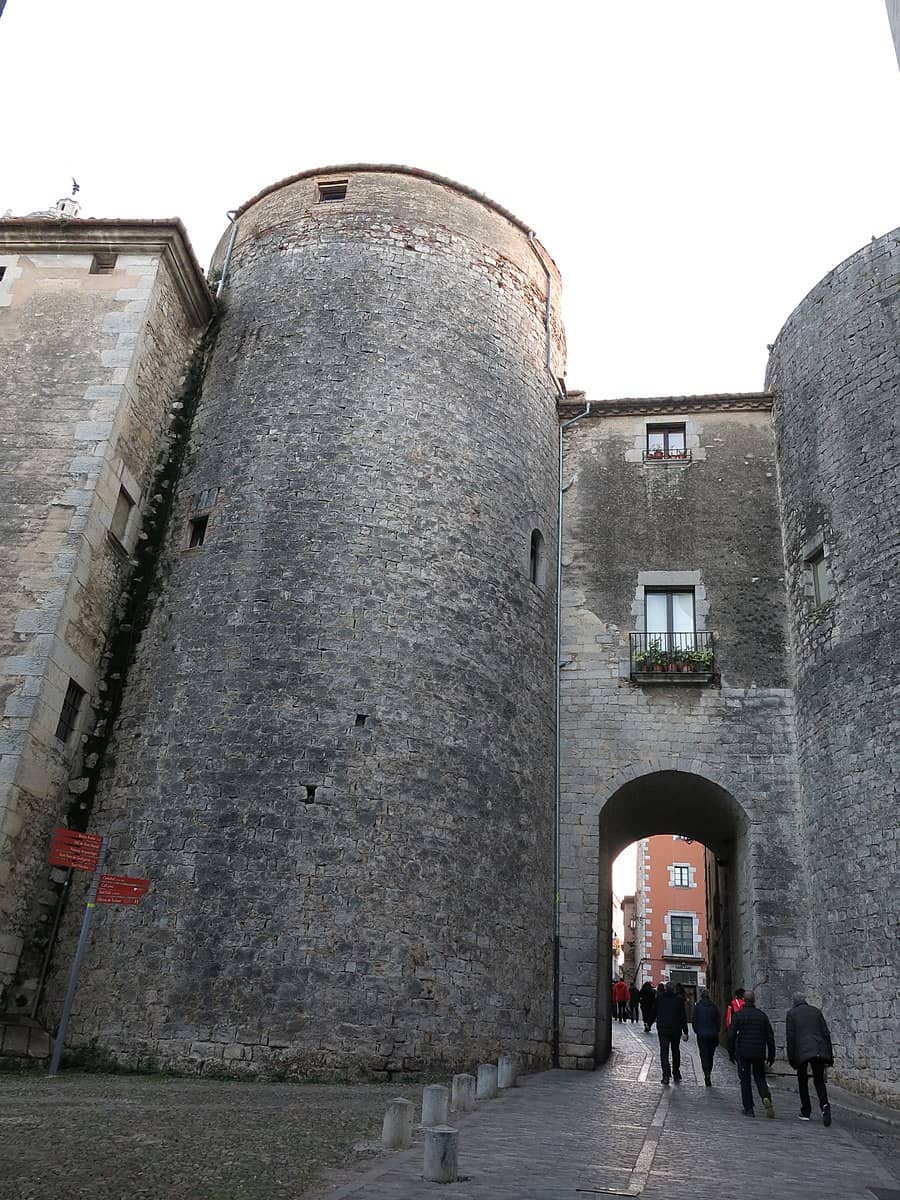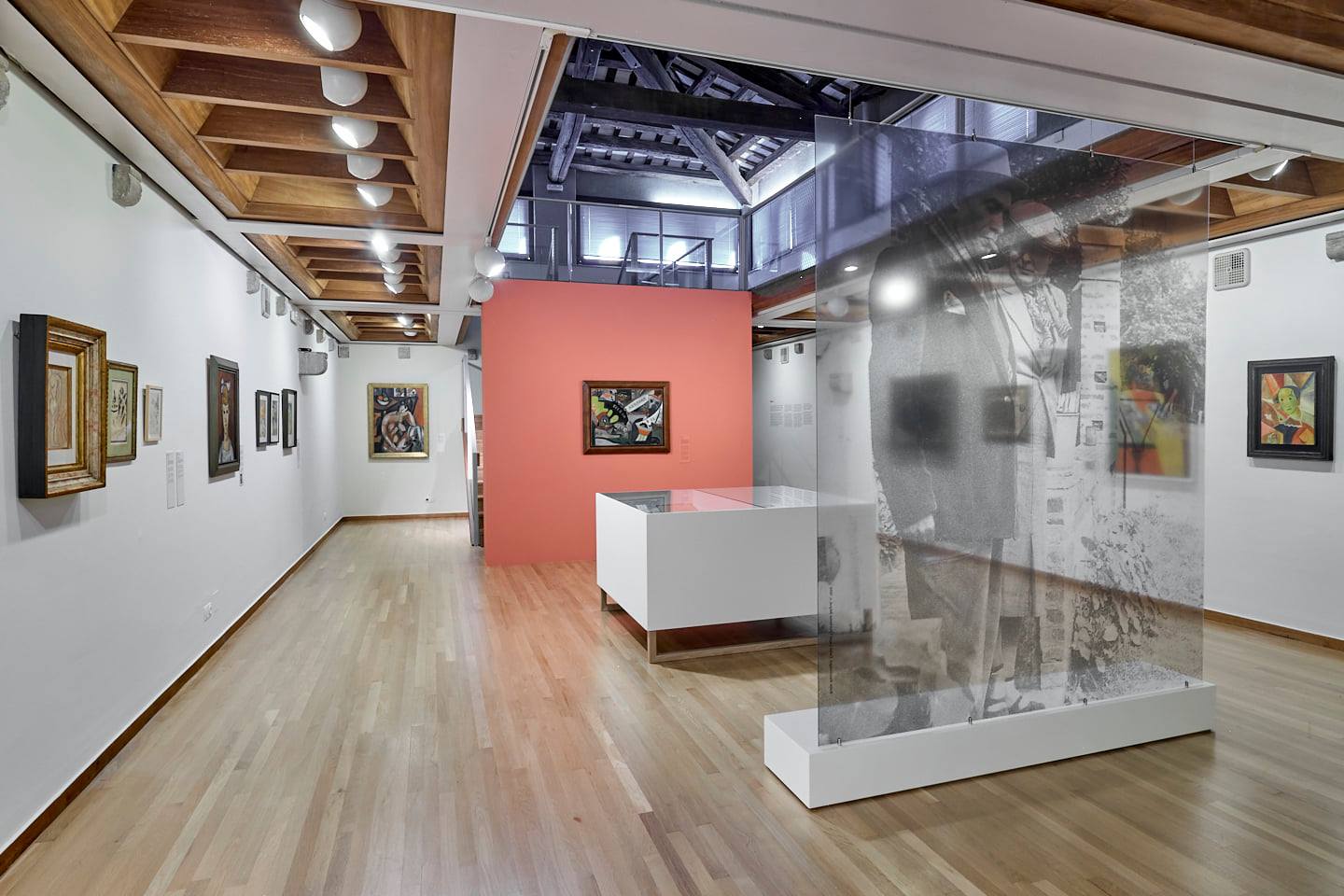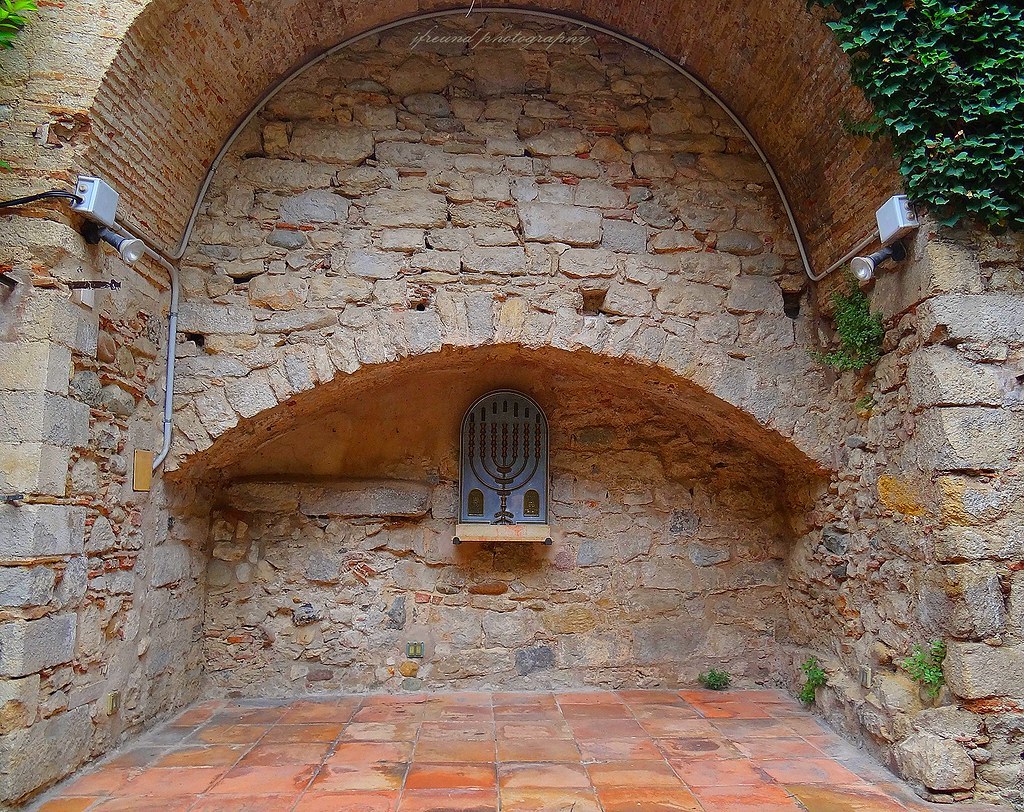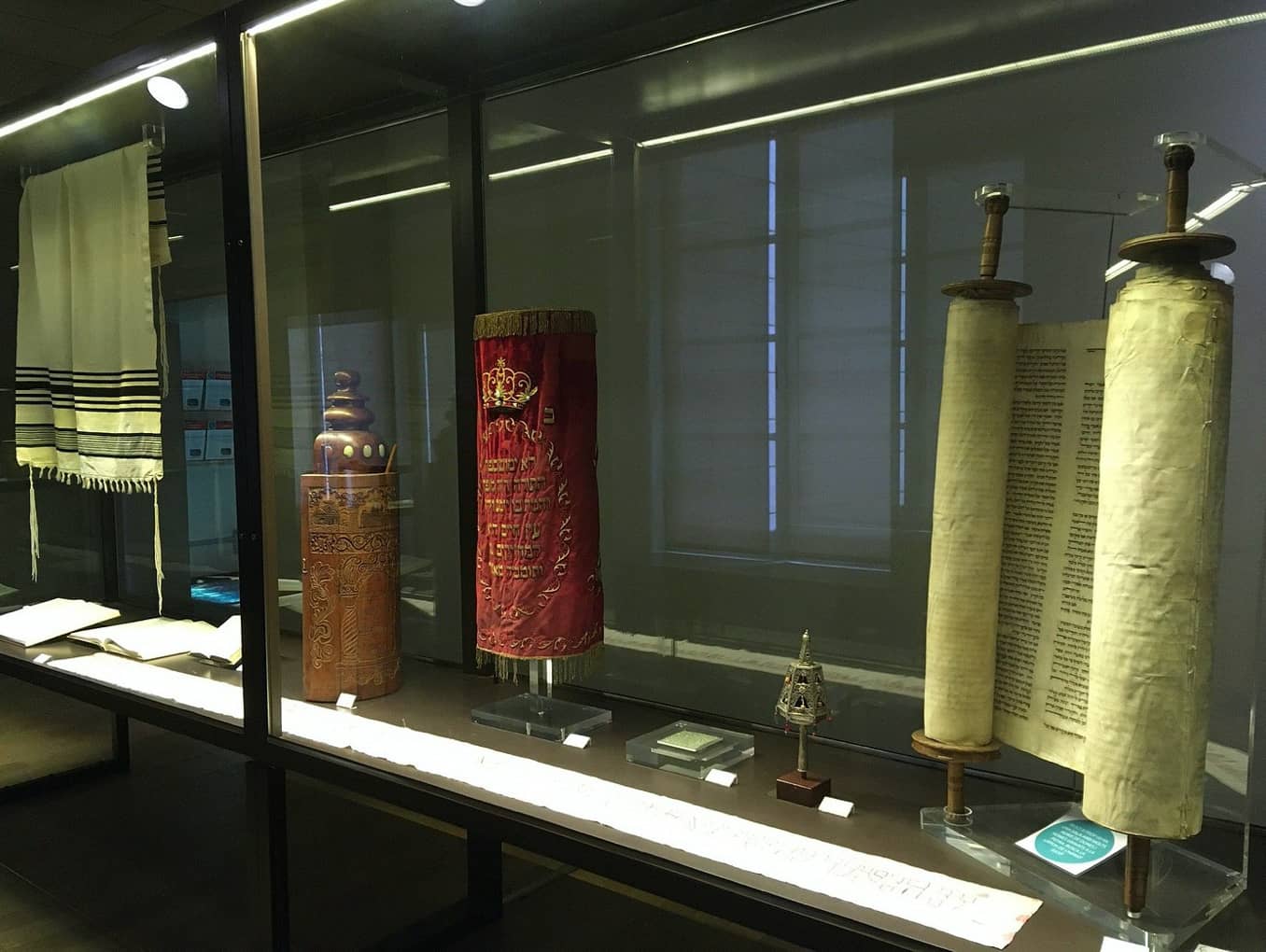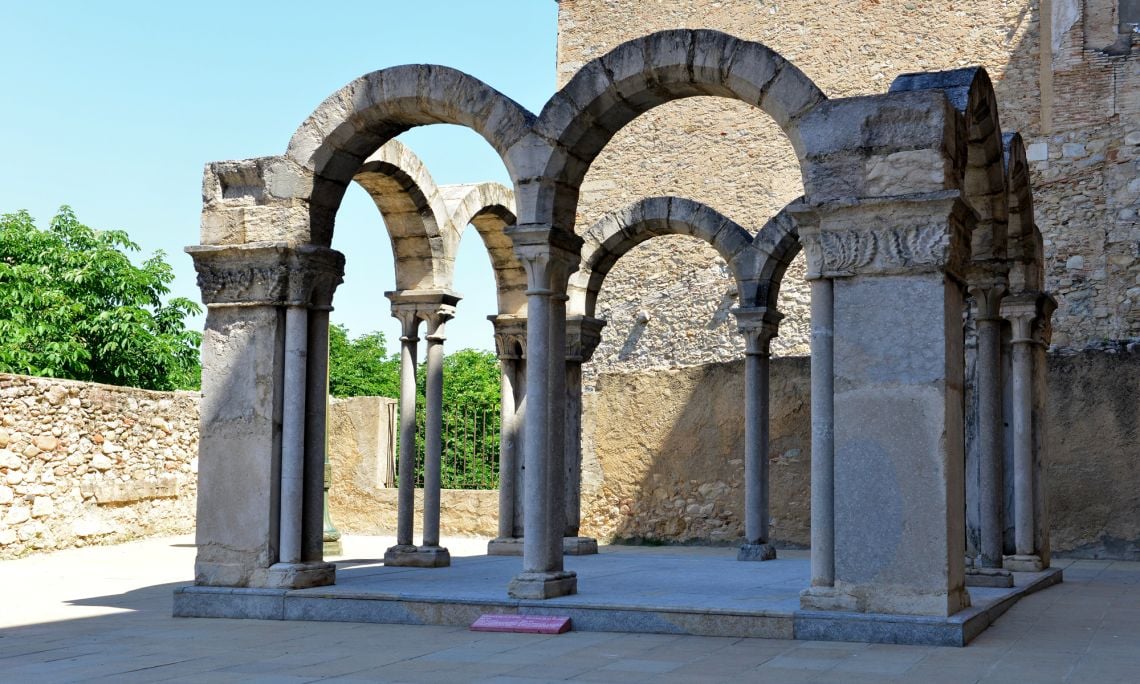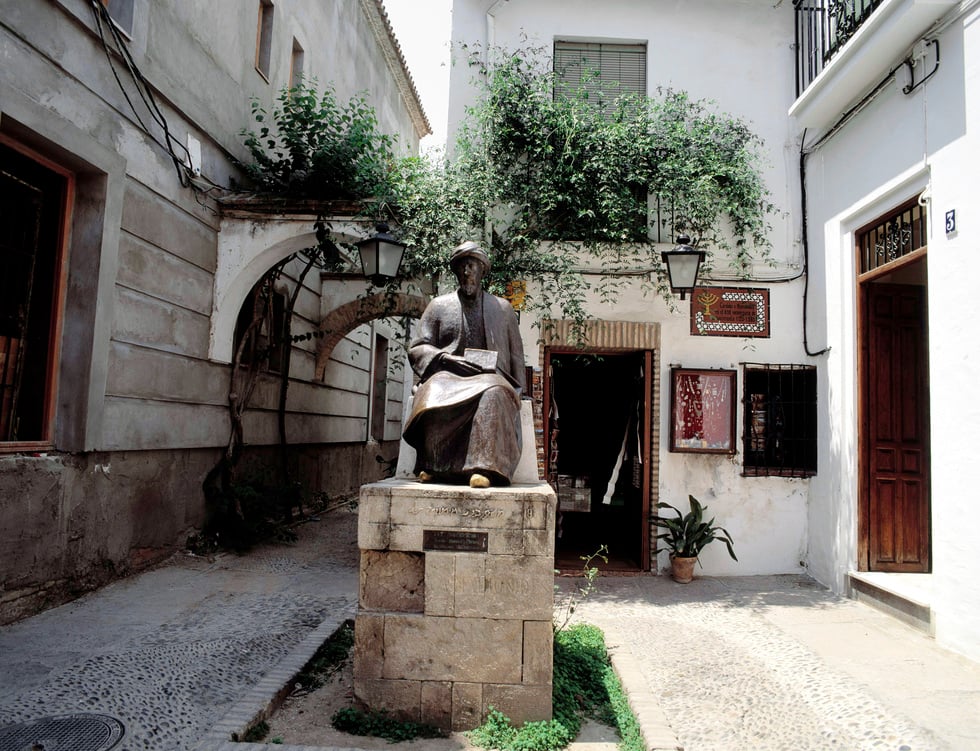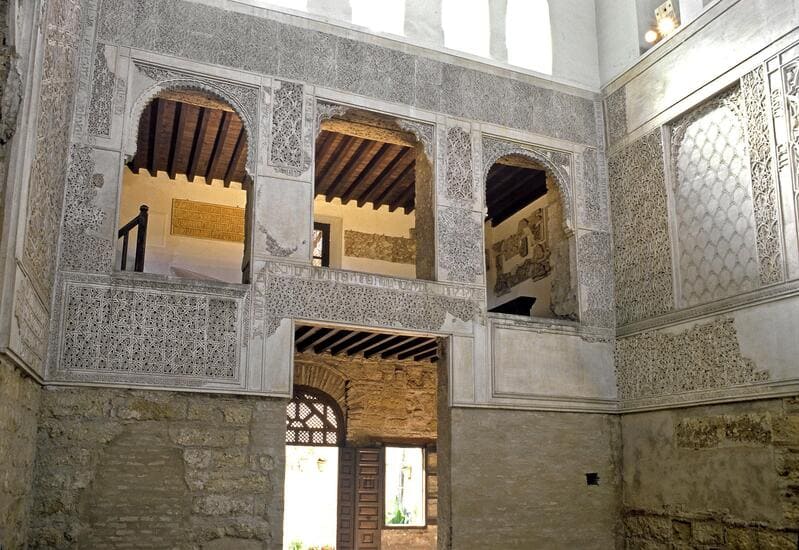Balesquida chapel, at the corner of the square with Eusebio González Abascal street, crowns the architectonic series of the Rúa with a Baroque building containing the image of the Our Lady of Hope and which constitutes a perpetual homage – as borne out by the scissors hanging from the corner balcony to the guild of tailors. the brotherhood of Balesquida was, in the 13th century, the beneficiary of the will of a lady from Oviedo, Velasquita Giráldez, and the feast day of this entity, Martes de Campo (Country Tuesday), is a local holiday in Oviedo.
Archives: Directory listings
Directory listings
Campoamor Theatre
The Campoamor Theater, founded in 1892, was built over a former Jewish cemetery, and only several plaques now stand demarcating the former — now unrecognizable — Jewish quarter. The Campoamor has attracted the finest musical artists including Rubinstein, Ravel, Bartok, Rostropovich, and Yehudi Menuhin. Or Mario del Monaco and Victoria de los Angeles performed for the reopening of the theatre in 1948, after it had been practically destroyed during the October Revolution of 1934.
The Campoamor Theatre hosts the second oldest opera season in Spain, after the Liceo de Barcelona, and stages, together with Madrid, the only zarzuela season in Spain. Each October, it is also the venue for the Princess of Asturias Awards ceremony, considered by many as the second most important in the world, after the Nobel Prize.
Tapestry of Creation in the Cathedral Museum
The Tapestry of Creation or Girona Tapestry is a Romanesque panel of needlework from the 11th century, housed in the Museum of the Cathedral of Girona, Catalonia, Spain. On one part of the tapestry are two individuals with the word iudei (Jews) identifying them: a splendid, early iconographic portrayal in the city which has become the symbol of the Jewish History Museum. The proximity of the Jewish quarter to the cathedral constituted a permanent source of conflicts between the Jews and Christians of Girona. Already since the late 13th century there have been numerous attacks on the call owing to Easter Week or at other times of extreme religious fervour. In 1436 the King had to prohibit the custom of the stoning of Jews by students and the clergy from the cathedral.
Sobreportes Gate
The impressive Sobreportes Gate, providing access to the medieval city and near the Jewish quarter, is situated alongside the Roman wall. It is here that the entry to the barri vell (old district), declared Historic-Artistic Heritage, commences, leaving behind on the right the Palace of Justice and opening up on the left as far as the large staircase of the cathedral.
Girona Museum of Art
Girona Art Museum is home to the most important collection in both the diocese and in Girona province as a whole and offers an itinerary through unique works of Catalan art.
Visitors to the Museum are offered a chronological presentation of pictorial and sculptural works from different periods and in successive styles (Romanesque, Gothic, Renaissance, Baroque, Realist, Art Nouveau and noucentista), as well as rooms devoted to ceramics, glassware and liturgical art.
The route through the permanent exhibition starts with a fragment of an early Christian tombstone from Empúries. The collection significantly includes the liturgical ensemble from Sant Pere de Rodes (ninth century), the Martyrology of Usuard (a fifteenth-century illuminated manuscript) and one of the most striking altarpiece ensembles of the fifteenth-sixteenth centuries, as well as major Catalan Renaissance and Baroque works. The visit concludes with works by nineteenth- and twentieth-century painters who were connected with Girona, such as Urgell, Vayreda, Rusiñol, Berga and Bertrana.
The Museum’s exhibition rooms and gardens periodically host different activities and temporary exhibitions.
Girona Art Museum is located in the exceptional setting of the former Episcopal Palace, the first references to which date from the tenth century. Different areas of the building still conserve their original format. Examples are the gaol, where priests condemned by the ecclesiastical court served prison sentences, and the majestic garden, which is open to the public on different occasions throughout the year.
Girona Synagogue
The Girona Synagogue was an important medieval synagogue in Carrer de Sant Llorenç in Girona, Spain, which served as the centre for early Spanish Kabbalism, with scholars such as Nachmanides, Issac the Blind and Azriel of Girona using the synagogue as a house of learning. The synagogue was built around the 13th century, with large renovations done in the mid 14th century, mostly funded by the Taroç family. Following the Massacre of 1391, the synagogue was desecrated and looted, however in 1415, Ferdinand I of Aragon ordered that the synagogue be restored to the Jews. During the Catalan Civil War the synagogue was partly destroyed, and following the Alhambra Decree of 1492, the synagogue was sold to the canons of Girona Cathedral on the 10th July, 1492 for the price of 300 pounds. Today the site of the synagogue functions as a museum where archaeological finds and documents related to the synagogues of Girona, are displayed.
Jewish Museum of Girona
The aim of the Jewish Museum of Gironia is to preserve the history of the Jewish communities of Catalonia. In most cases an attempt has been made to illustrate the explanations given during the visit to the Museum with examples of items originating from Girona’s own Jewish history. These examples, which may be in documentary, archaeological or pictorial form, thus offer a general explanation of the pattern of Jewish life in medieval Catalonia.
Girona History Museum
At number 27 of Força street is the entrance to the City History Museum which along with its permanent exhibition has staged numerous temporary ones. At the museum, there is a visual and educational overview of the history and life of Girona is provided from prehistory to the present day, there is also a reference to the Jewish collective as an essential part of the city in the Middle Ages.
Maimonides Square
At the heart of the Jewish quarter of Cordoba, opening at the end of the Jewish Street is Maimónides Square. For centuries, the name of Maimónides Square has been changing. In times of yore, Maimónides Square was known as the Armentas, Arcediano and Bulas square. Around the square, there are many ancestral houses, such as the Renaissance house of Bulas, where the Córdoba Bullfighting Museum is currently situated. At the opposite end of the square, at the corner with Tomás Conde street, another noble building of note: the house of the Counts of Hornachuelos.
Cordoba Synagogue
The Córdoba synagogue is a historic edifice in the Jewish Quarter of Córdoba, Spain, built in 1315. The synagogue’s small size points to it having possibly been the private synagogue of a wealthy man. It is also possible that Córdoba’s complex of buildings was a yeshivah, kollel, or study hall. Another possibility is that this was the synagogue of a trade guild, which converted a residence or one of the work rooms into the synagogue. The synagogue was decorated according to the best Mudejar tradition.
After the expulsion of the Jews in 1492, the synagogue was seized by the authorities and converted into a hospital for people suffering from rabies (hydrophobia), the Hospital Santo Quiteria. In 1588, the building was acquired by the shoemakers guild, who used it as a community center and small chapel, changing the patron saint of the building to Santos Crispin-Crispian, the patron saint of shoemakers. It was declared a National Monument in 1885.
Since then it has undergone several phases of the restoration including that of Felix Hernandez in 1929. In 1935, the Spanish authorities marked the eight-hundredth anniversary of Maimonides’ birth by changing the name of the square in which the synagogue is located to Tiberias Square, honoring the great native-born philosopher, who is buried in Tiberias. At this celebration the first Jewish prayer service in 443 years to occur openly and with full knowledge of the authorities was held at the synagogue. Another restoration was begun in 1977 for the reopening of the building in 1985 to celebrate the 850th anniversary of Maimonides birth. It is the only synagogue in Córdoba to escape destruction during years of persecution. Although clearly no longer functioning as a house of worship, it is open to the public.
